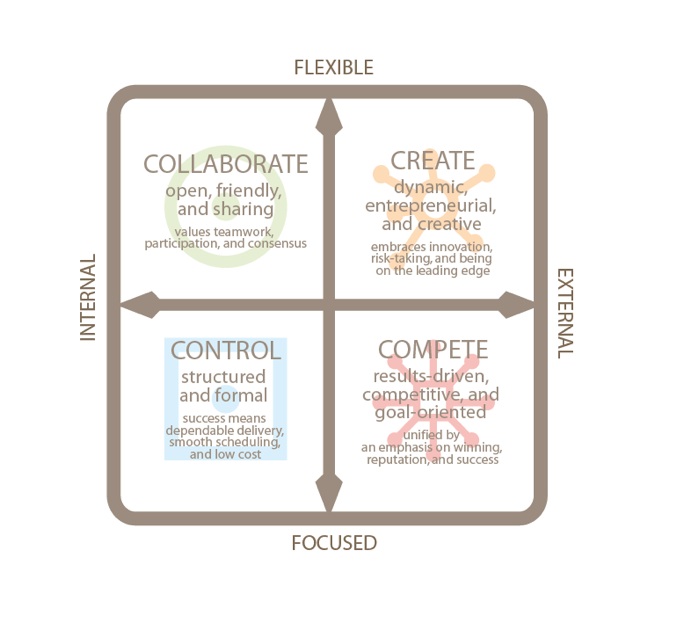
How important is creativity in business today? Some would say creativity is the birthplace of business. Others would agree that without creativity businesses quickly become irrelevant. If that is true, wouldn’t these same ideas apply to leaders in all businesses? John Quincy Adams once wrote, “If your actions inspire others to dream more, learn more, do more, and become more, then you are a leader.”
So why wouldn’t more business leaders be spending most of their time looking for ways to engage and inspire their companies and their teams? It certainly seems intuitive. However, what most businesses don’t realize is their people have a very different perception of them. In fact, most employees believe their leaders lack creativity.
How big is the chasm between leader and employee? Much larger than you probably realize. In the 2015 State of Curiosity survey conducted by Harris Poll, two in three workers (66 percent) report they face barriers to asking more questions at work, and only one in four workers (22 percent) describe themselves as “curious” at work. In fact, in every industry included in the survey, employees ranked themselves personally as being more curious than the employers they work for—a clear signal that our organizational structures are creating unnecessary handcuffs, thereby stifling innovation and discovery.
Productivity vs. Creativity
When CEOs were asked in the State of Create Survey by StrategyOne what skill they most value in their people, they said, “creativity, the ability to solve problems, come up with new solutions, and use brainpower to figure things out.” While this is valued, the actions of these organizations tell an alarmingly different strory. The vast majority of U.S. workers polled (80 percent) believe there is increasing pressure to be productive rather than creative at work. They also report spending just 42 percent of their time being creative.
Many articles have suggested that businesses must change their cultures to allow for more creativity and innovation, but all of these authors keep missing the same basic point: Businesses need to be more critical and diligent in changing underlying business processes and practices that inhibit people in the organization from becoming more curious and allowing them to challenge internal status quo. Rigorous command-and-control structures, weekly pipeline reviews when projects take six to 12 months to close, daily activity reports, limited or no cross functional involvement in R&D, and business leaders who never spend any time in the field with people and customers are just a few of the ways businesses create too much rigor and bureaucracy.
Here is a great example. After training many customer-facing teams on how to develop more business-to-business (B2B) loyalty, organizations are fairly quick to grasp that it is the quality of their interactions that generates customer loyalty. Unfortunately, few leaders understand how to measure the quality of customer interactions and even fewer purposely sit down with the senior leadership team to change customer relationship management (CRM) or pipeline data to be consistent with these interactions. As a result, these teams continue to be scrutinized and even disciplined on the number of prospects they are generating (volume) versus the quality/likelihood of the business to provide value to the prospects business with the products/services they sell.
So why is it so hard to make these instinctual, even fundamental, changes? The data say the leaders within the business are to blame. For example, in DDI’s Global Leadership Forecast 2011, fostering creativity and innovation was rated as the third most critical skill for the near future by more than 12,500 leaders from around the world. The data showed a significant surge in the importance of creativity leading up to this forecast—with it playing an even larger role through 2015. Sadly, 50 percent of the leaders in this forecast considered themselves ineffective at fostering creativity. In fact, these leaders scored lowest in creativity versus any of the other critical leadership skills!
Rather than learning from data such as these, business leaders choose the path of least resistance—doing nothing. Actually, they make the situation even worse. How? Simple: They swing the pendulum even harder toward process rigor and execution, virtually snuffing out curiosity and creativity in their organization.
Types of Organizational Cultures
To change, leaders first need to understand organizational culture and how it inhibits the business’s ability to embrace certain behaviors. Kim Cameron, PhD., and Robert Quinn, Ph.D., believe organizational cultures break into four types:

While any of these culture types can evolve and encourage higher levels of creativity, they also can establish a highly dysfunctional culture incapable of sustained creativity and innovation.
From the start of the Six Sigma revolution through the financial crisis and up to today, a large number of businesses rely on structure and formal control to minimize cost and risk. As a result, most leaders believe good leadership is all about execution. When the company is underperforming, they push harder, require more, and place blame on having the wrong people. The harder they push, the higher the turnover (including top performers) and the more dysfunctional they become. I currently am witnessing this cycle firsthand in a division of a Fortune 50 client where turnover has ballooned to more than 40 percent, top performers are leaving in droves, sales continue to slide, and the leader’s only response is “We have the wrong people.”
Creating the Right Climate
Leaders in control-based business don’t realize that process, leaderboards, and incentive trips will not produce the same results they used to. In business today, success comes when leaders create an open, collaborative climate that encourages innovation and risk taking. A climate that encourages curiosity and rewards creativity. To create this climate, leaders must:
- Create a safe environment for questions: Four-year-olds ask 300 questions a day. By the time they’re in middle school, the tally plummets to near zero. Curiosity begins with questions, and limiting your team’s ability to have open, constructive dialogue kills curiosity. Leaders must allow time for exploration and questions. They also must be present (physically and intellectually) and curious during these sessions.
- Encourage and reward risk taking: This is exceptionally hard for most businesses. Since the financial crisis, businesses have become obsessive about managing/controlling risk, and in many instances, they punish people who do take risks. While these businesses think they are protecting themselves, they actually are limiting the company’s ability to realize its full potential or, in some instances, strangling the life (and ability to innovate) right out of it. Encouraging and incentivizing risk taking will open up the organization’s thinking and create more engagement. Since organizations with high levels of employee engagement outperform other businesses by 202 percent, upside for the business is huge!
- Become curious learners: Many leaders are myopically focused on process and execution versus the outcomes required to create, build, and/or sustain a successful business. Some of this behavior carries over from the way they were managed, but when working with leaders, I see something very different. There are large numbers who hide behind process because they are poor leaders. They push execution and manage to pipeline and sales call numbers. And when results don’t come, the excuses are the same: “Execution was great, we just don’t have the right products and our price is too high.” This is their way of letting themselves off the hook.
A few months ago, I was meeting with a group of European senior business leaders for a technology company and this exact scenario transpired. Several of the leaders kept saying they could not be successful because their technology was inferior, their price was too high, and unless corporate gave them better unique differentiators, they would keep losing. Talk about passing the buck! If they were even remotely curious, they would know that products and price only capture loyalty from B2B customers 19 percent and 9 percent respectively (CEB Challenger Loyalty Study). It’s how salespeople engage customers that generates loyalty 53 percent of the time. Even after they became aware of this fact, they still wanted to focus on product and price versus figuring out (being curious) how to differentiate and win by engaging customers more effectively.
Cultivating Curiosity
Leaders, like their teams, must become more curious or risk becoming irrelevant. In fact, if they are going to create a corporate climate of curiosity, it is a must for them. So why don’t they embrace this? Mostly because they have to work at it. Curiosity is a developed skill and one that has to be nourished constantly. This takes time and effort, and unfortunately most leaders want to rely on what has put them in their jobs versus what is going to keep them relevant and in their jobs. Liz Wiseman sums it up best in her book, “Rookie Smarts”: “In a growing company everyone is under qualified every day. In business today, it is not about what you know but how fast you learn.” As such, leaders must become experts at learning and practicing curiosity.
Look at any business that is stalled or underperforming and you will see a lack of curiosity. The organization becomes self-limiting because leaders are the blockade that prevents new ideas and new thinking from driving creativity and innovation. But it starts much earlier—when curiosity is encouraged and nurtured—because without curiosity, creativity will never follow.
“Creativity is intelligence having fun.” —Albert Einstein.
Michael Hvisdos is founder and CEO of Inquizo, a contemporary business solution agency that helps Fortune 500 companies and start-ups worldwide compete in today’s ever-changing business environment by disrupting conventional thinking, implementing innovative go-to-market strategies, and increasing customer loyalty. Hvisdos also works with CEB’s Challenger transformation team as a senior facilitator and growth strategy advisor. Visit www.inquizo.com to learn more.




